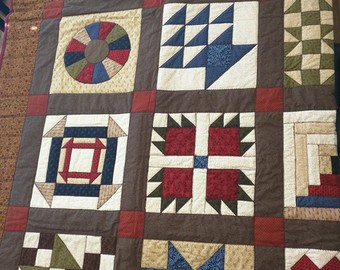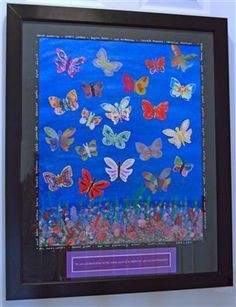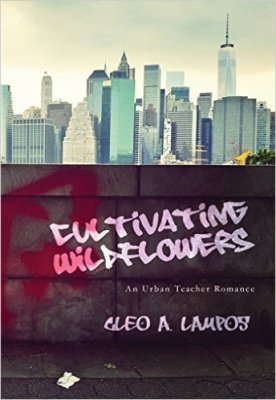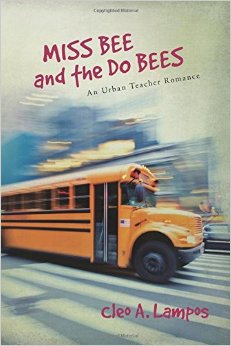Cleo Thoughts, Quilts
Quilting in the Classroom
“It is the supreme art of the teacher to awaken joy in creative expression and knowledge.” – Albert Einstein

The theories developed by the great minds of education paraded before our class in Educational History and Philosophy. The imagination of Mary McLeod Bethune as she made desks out of orange crates and saved butcher paper for the students to write upon intrigued me. Leo Hart taught his students how to make bricks for their own school building. The emphasis of Maria Montessori on nature and following a child’s inclinations resonated in my own spirit. John Dewey encapsulated a theory of teaching that influenced my journey as an educator. Dewey believed that “education is not preparation for life: education is life itself.” To accomplish this goal, students need to be in creative classrooms.
Creativity is the constant companion of a teacher who aspires to light a spark in children. Most educators are latent crafters. They love their Popsicle sticks, bits of “this and that”, scrap boxes, glue and wall paper samples. Such is the stuff from which their classroom projects evolve. But the educators who have discovered the magic of teaching quilt construction find that the minds of their students are stretched to a new dimension by the demands of creating from fabric. Every requirement in the curriculum conceivably works into the process of quilt making. Math skills from measuring to geometric forms, language concepts for summarizing ideas into visual processing, as well as artistic values in fabric textures and colors. History, science and literature serve as subject matter. Visual motor integration increases through cutting, pinning and stitching. When the classroom provides students with hands on experiences, many children find hidden talents and skills. As Ken Robinson, an advocate for educators, states: “The role of a creative leader is not to have all the ideas; it’s to create a culture where everyone can have ideas and feel that they’re valued.”

Quilting History
Historical events lend themselves to quilt making. Mary Muraski’s third grade class at Randall Elementary School in Madison, Wisconsin created a quilt to commemorate the Sesquicentennial (150 Anniversary) of the state of Wisconsin. Using muslin squares with paint and marker pens on the fabric, the children appliqued felt designs onto the square. They practiced small motor skills by using a buttonhole stitching or running stitch for the felt flower, animal, state tree or other symbols of Wisconsin such as the Weinermobile, Laura Engel Wilder’s books, and a cheesehead. The teacher joined the squares with sashing strips and bound the quilt. The final square contained handprints of the classmates. By studying Wisconsin culture and history, the students learned to identify main concepts and transfer ideas to visuals. Their heritage is now hanging in the entry to the school.
Quilting Science
Because parents help their children with school projects, Janis Arquette, of Bensenville, Illinois, did former teachers do. They volunteer in their offspring’s classroom. When the first grade studied reptiles, amphibians and fish, the appropriate culminating activity seemed logical: make a fish quilt.
Janis leaned on her creative juices and made fish templates that the children used to trace onto muslin squares and color with Crayola fabric crayons. Then they cut out their fish. Students also created seaweed, seashells and seahorses to add to the watery fabric. The children placed their fish on the ocean cloth, then Janis fused the fish in place and quilted around the sea scape, adding free motion stitching to the shells, seaweed and fins.
On rainy-indoor recess days, Janis helped students sew button eyes on fish. Adding three octopi, everyone signed their name on an arm. The completed quilt graces the first grade hall. The middle school home arts teacher praised the effort in creativity, self-esteem and introduction to practical sewing skills.

Quilting Math
Green Bay, Wisconsin boasts a class of deaf and hard of hearing students who are very aware of visual stimuli. Peg Beilfuss is the teacher of 4 to 6 graders who create a small quilt to emphasize accurate measuring. All the students design a quilt block, but just one is selected to be repeated by all for a cohesive pattern. The purpose of the project is to cut the quilt pieces precisely and hand stitch the seams with an exact measurement. The class adds their quilt to the growing collection.
Quilting Heritage
The one quilt that my class of fourth graders made from construction paper every year occupied a week in February. As we learned about Black History, the stories from Harriet Tubman and the Underground Railroad occupied our imaginations. The Freedom Quilts that the abolitionists stitched and the map quilts that the slaves created are as legendary as they are controversial. However, the hands of my students carefully constructed replicas of these instruments of freedom. Carefully, respectfully, intentionally. And, yes, creatively within the bounds of history.
The Creative Teacher
There is a legacy of teachers who reached the students in their time and sparked their skills and imagination in nontraditional ways. Eulalia Bourne brought the world to students in ranch schools, Gladys Kamakakuokalani Brandt served the children of Hawaii, Jaime Escalante ignited math in inner city students, and Phillips Schubert encouraged shy students in Fort Atkinson High School to speak their minds. These innovative educators brought their skills and excitement to the classroom and propelled their generation of students to excellence.
Just saying, it could take a quilt to do that, too.
“Created with perfect intentions with imperfect hands.”
-Anonymous Quilter’s Quote
Heddi Craft is a teacher and a mom. Her passion for many years has been creating quilts with children in classrooms, youth groups, in family homes, or other groups. The range of topics that Heddi incorporates is as limitless and the materials she incorporates. Her website is filled with ideas and finished quilts. Techniques, ideas and resources for making quilts with children is given.
Cleo Lampos is the author of teacher infused books available on amazon.com.
Buy Cultivating Wildflowers on Amazon today!
 Buy Second Chances on Amazon today!
Buy Second Chances on Amazon today!
Buy Miss Bee and the Do Bees on Amazon today!
Tanagram quilt photo: https://www.flickr.com/photos/bissellbaby/4497790684


